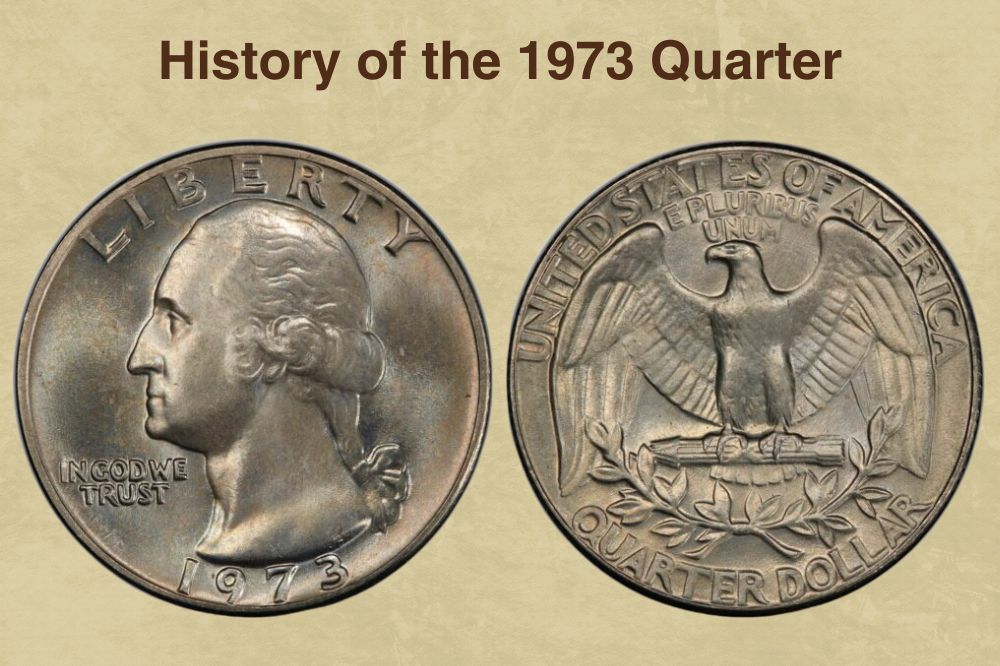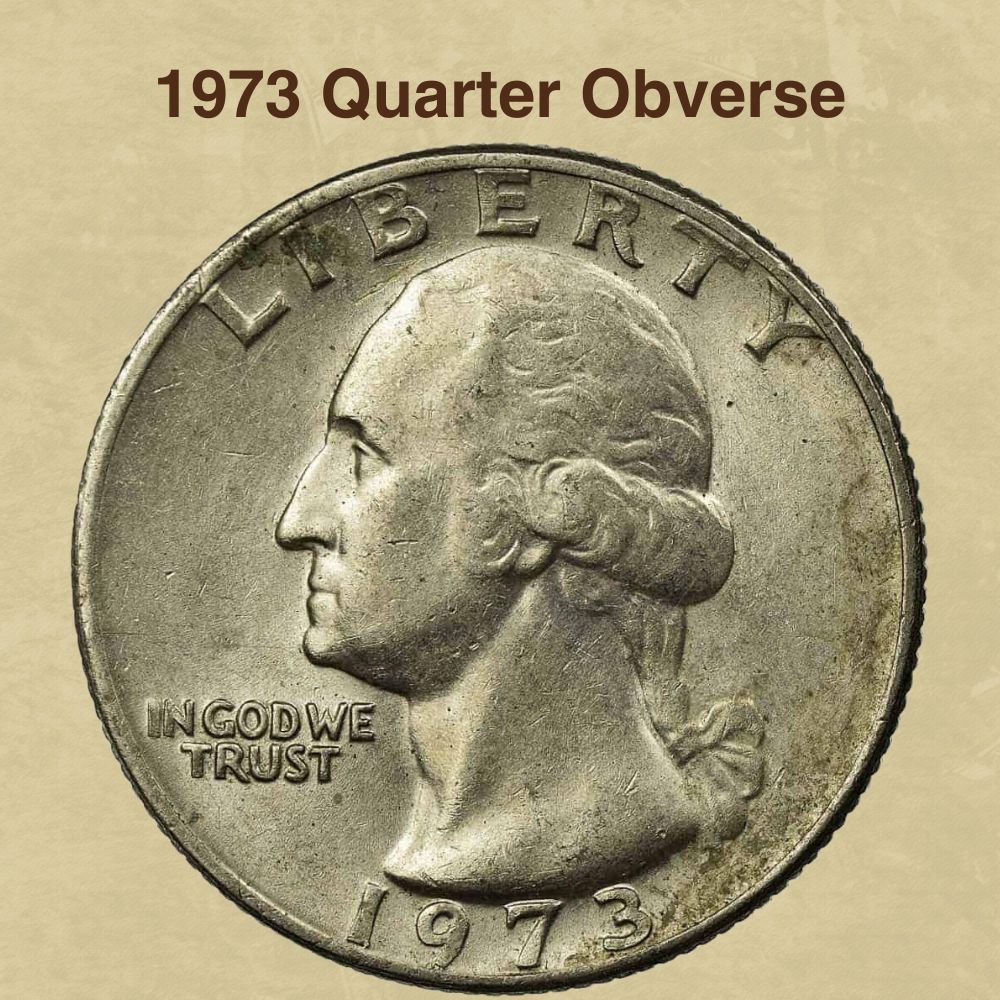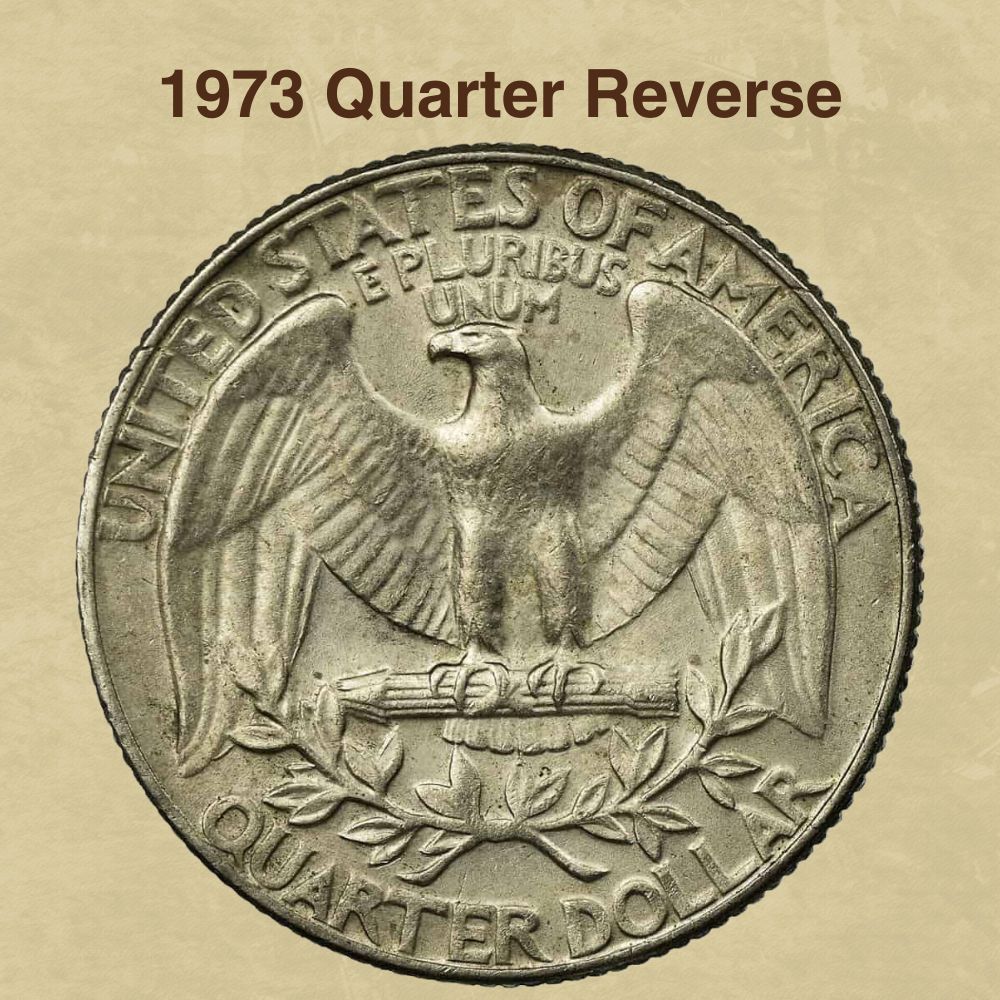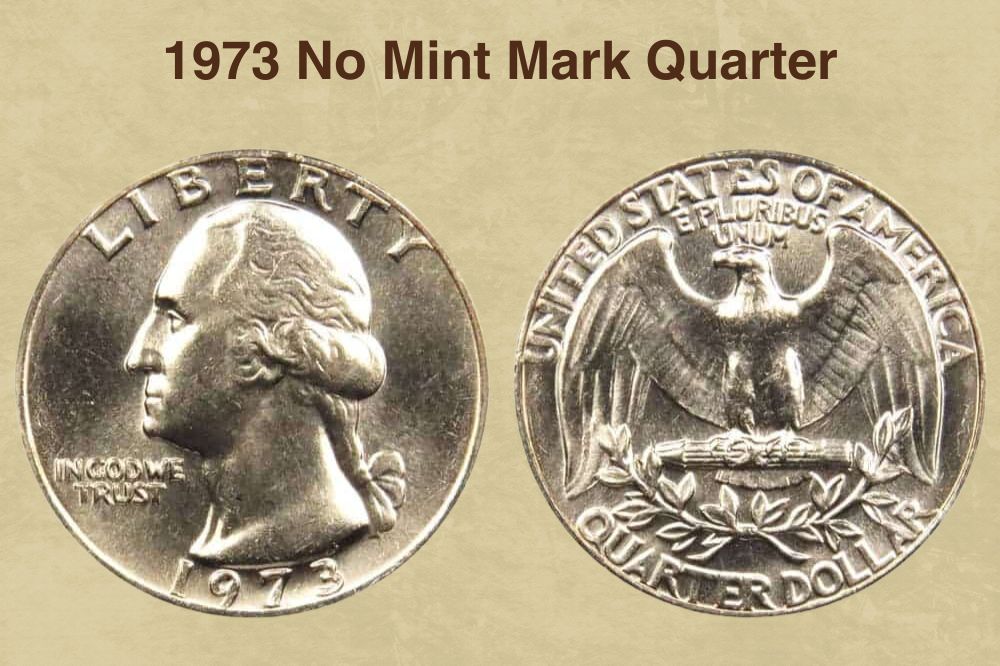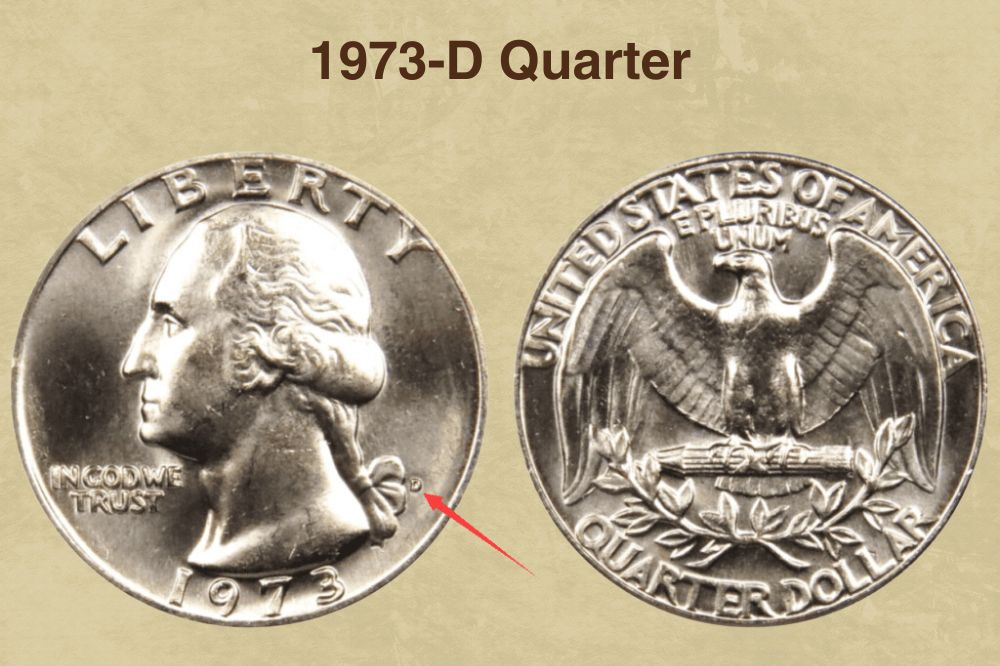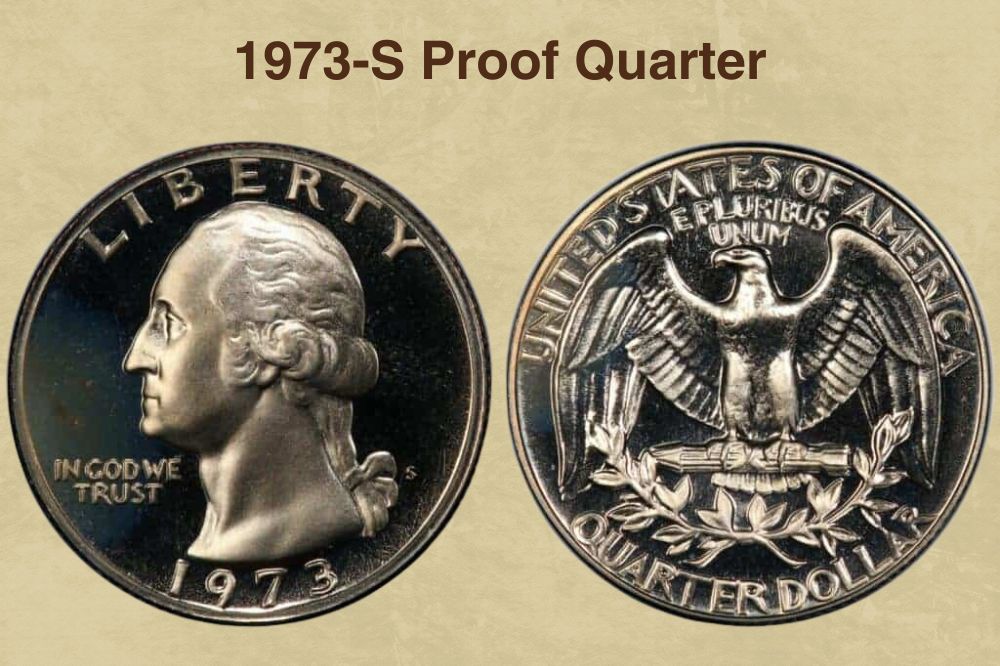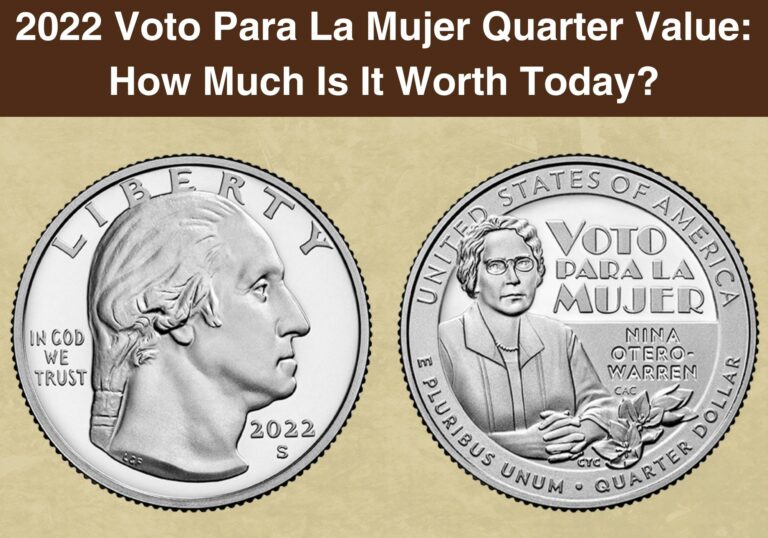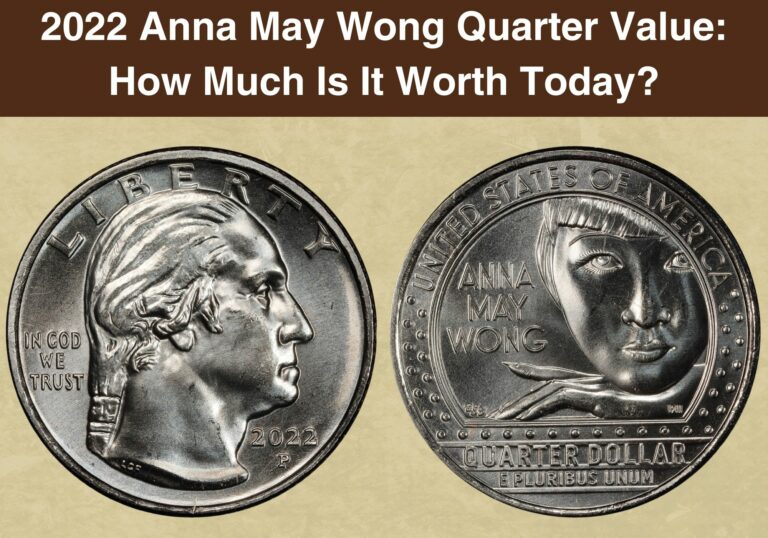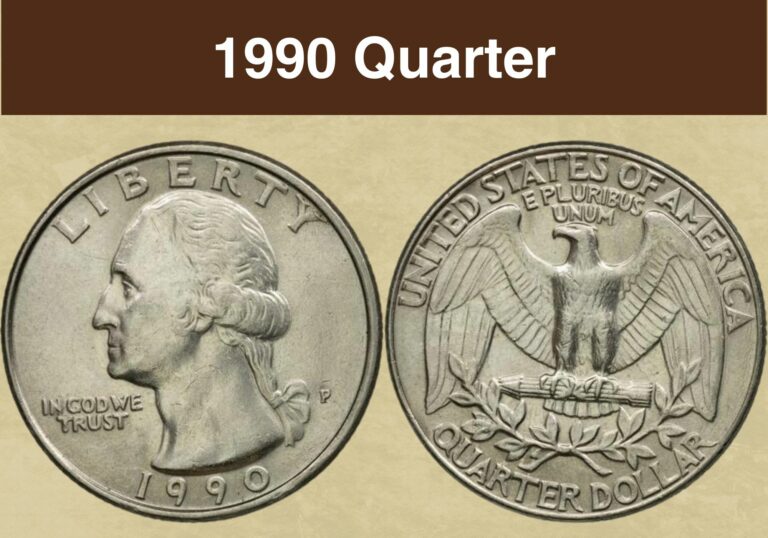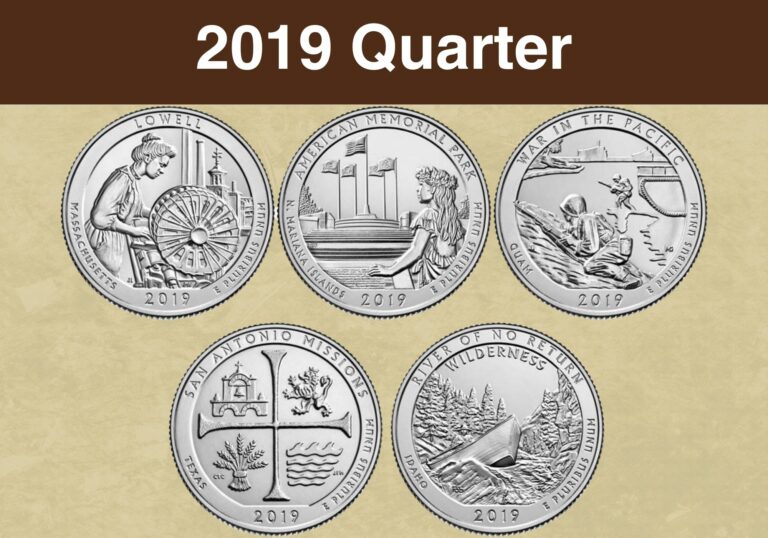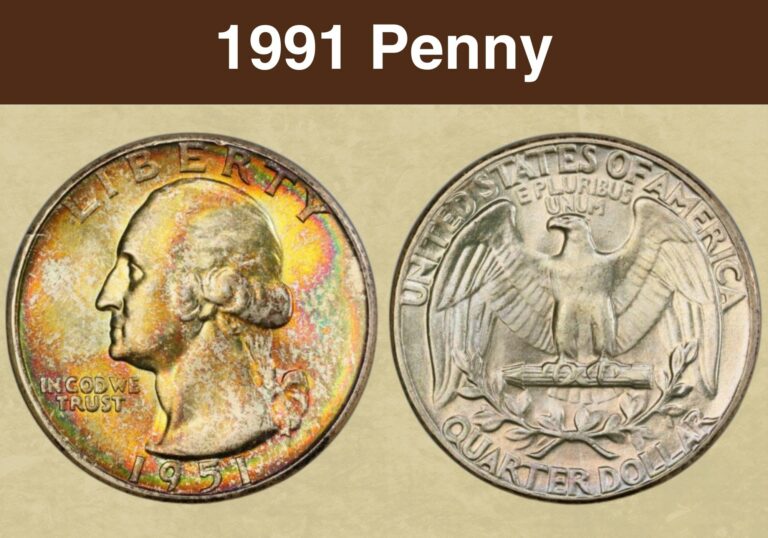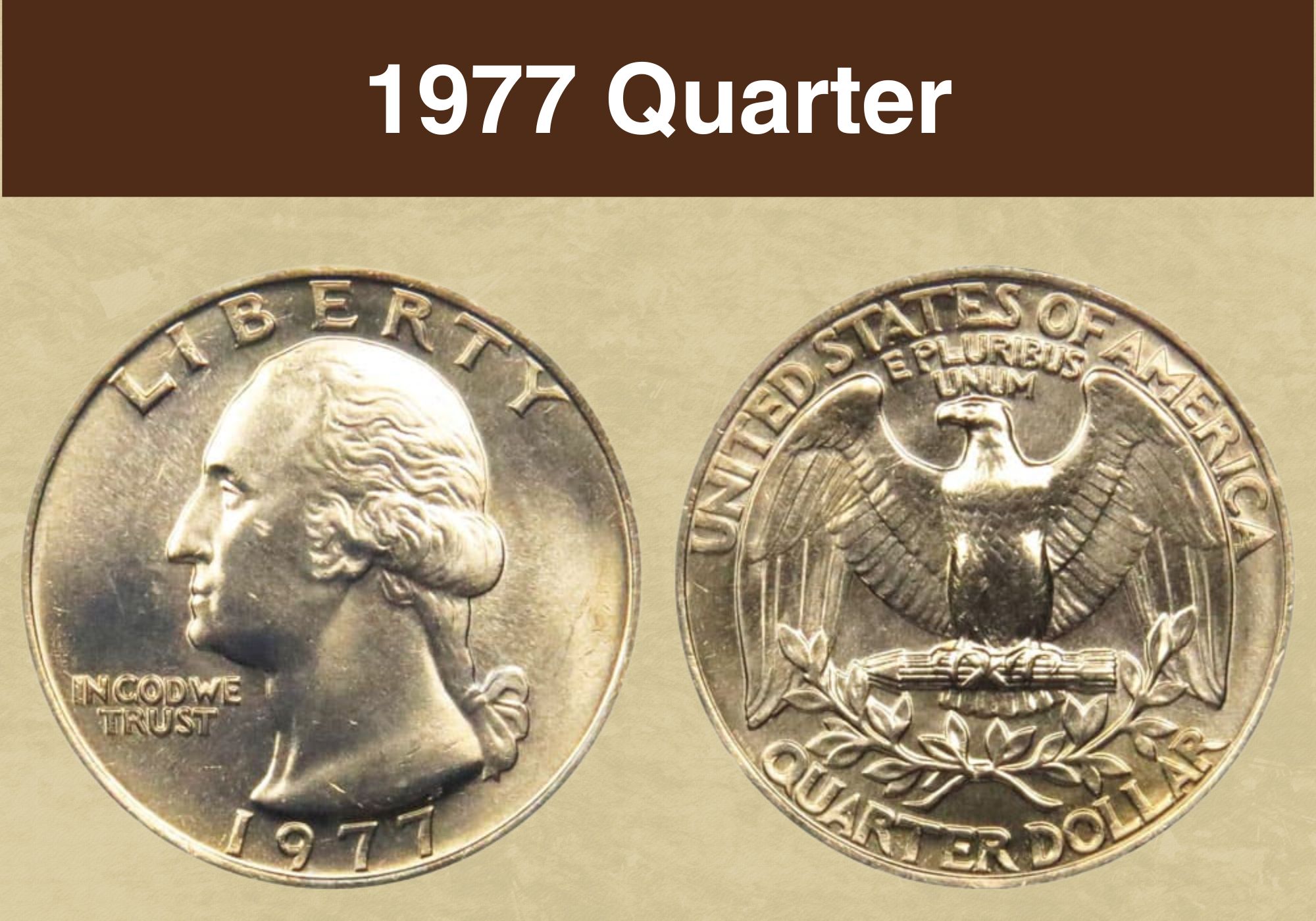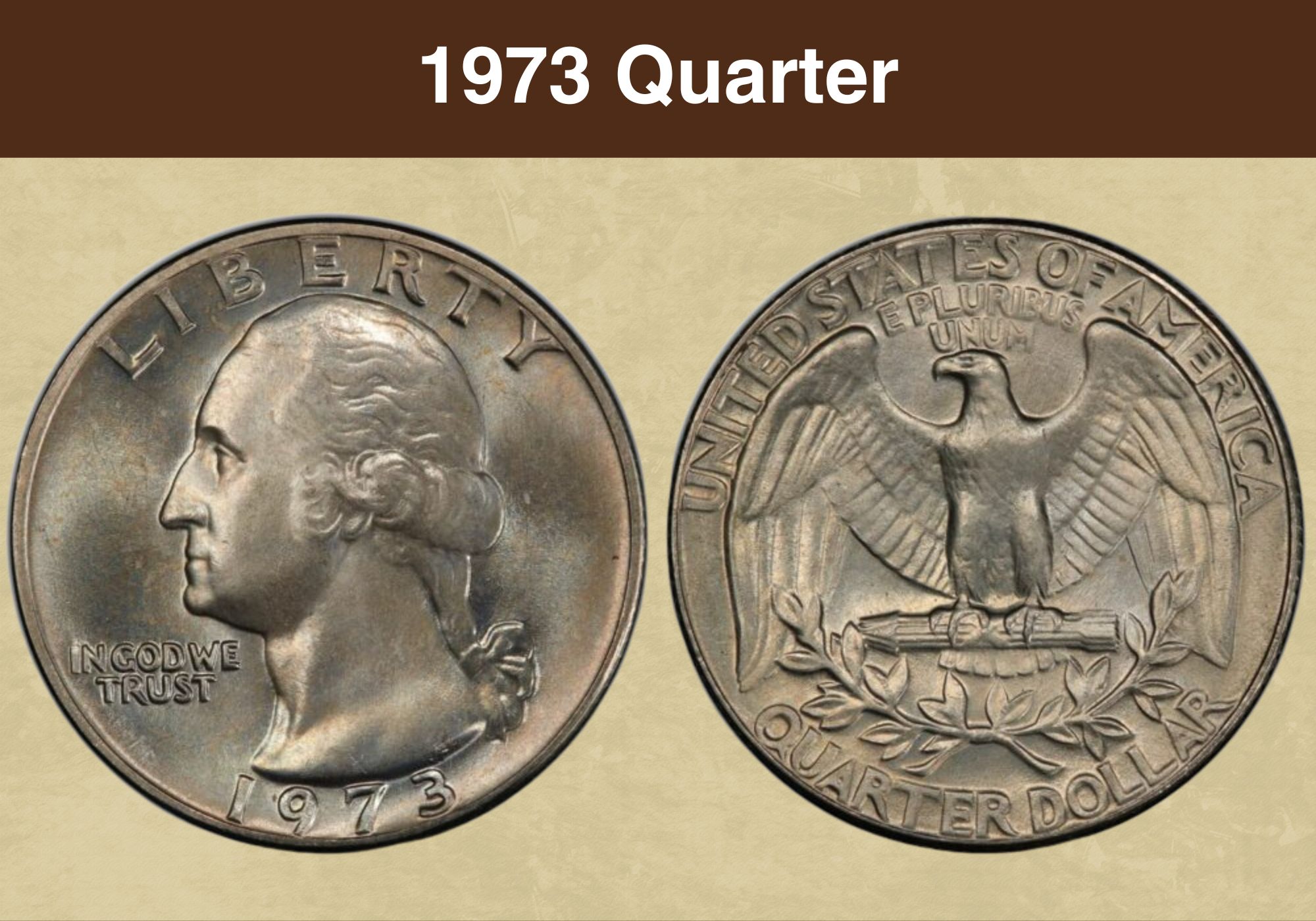
Coin Value Contents Table
George Washington was the 1st President of the United States, and he’s been on the 25c coin aka the Quarter since 1932 (even though he didn’t want to be). In 1974, the coin had a minor design tweak, retroactively drawing interest toward the previous piece. So let’s explore the 1973 Quarter Value, looking back into its history and learning more about this hard currency.
1973 Quarter Value Chart |
||||||
| Coin | MS 60 | MS 64 | MS 65+ | MS 66+ | MS 67+ | PR/PF 70 DCAM |
| 1973 (P) No Mint Mark Quarter | $1 | $5 | $28 | $125 | $1,300 | – |
| 1973-D Quarter | $1 | $5 | $20 | $65 | $1,800 | – |
| 1973-S Proof Quarter | $2 | $6 | $7 | $8 | $9 | $4,100 |
History of the 1973 Quarter
The Quarter – aka 25 cents – is the most commonly used coin in the US today. It’s also a good source of seignorage, which is the difference between a coin’s production cost and its face value or denomination. Those extra cents count as a sort of tax that provides revenue for the US Mint. As an example, it takes 2.72 cents to make a penny and 10.41 cents for a nickel.
That means these two coins cost more than double their face value – and close to triple for the 1c coin. So the mint is making a massive loss on them. In comparison, it takes 5.03 cents to make a dime, 11.11 cents to make a quarter, and 17.15 cents to make a half dollar, so these coins are still quite profitable. Beyond its financial significance, the quarter is a cultural icon.
Over the years, it has been used to showcase social causes and markers like national parks, American monuments, legendary American women, US states, and US territories. Back in 1973, the coin hadn’t secured its position as an SJW – Social Justice Warrior. But it was still a star both in daily transactions and in the collector’s space. And it first appeared in 1932.
Introducing the Washington Quarter
The coin was launched to mark the 200th Anniversary of George Washington’s birth. The US Mint held a contest to choose a sculptor that would create the coin. But things ended up a tad murky when the winner, Laura Gardin Fraser, was rejected by Treasury Secretary Andrew W. Mellon. Oddly, her winning design didn’t appear on the Washington Quarter until 2022.
Before then, the design that Mellon selected was by John Flanagan, and it was used in its original form for decades, except for a few sizing tweaks by William Cousins in 1999. These were mainly to allow for additional images on the back of the quarter since the 50 States, DC + Territories, and America the Beautiful Quarters had a lot more detail on their tails side.
Quarters were initially 90% Silver and 10% Copper. That changed in 1965 when they joined most of the other denominations in the Johnson Sandwich. This cupronickel combination was previously used on Nickels, and it spread to the other coins as a replacement for silver, since its price was way too high. This caused shortages, hoarding, and illegal coin melting.
Also read: Top 13 Most Valuable State Quarters Worth Money
Features of the 1973 Quarter
Jargon is a key part of fitting in with numismatists – people who study, collect, and trade in coins, medals, and tokens. So here’s a primer. The heads side of a coin is its obverse, the tails is its reverse, the thin side is its edge, and the raised border is a rim or collar. The images are called devices, the words are legends or mottos, and the coin’s background is called its field.
The Obverse of the 1973 Quarter
It shows George Washington facing left. The legend Liberty is above his head while the motto In God We Trust is on the left, in front of his neck. The mint mark is behind the ribbon that ties his ponytail and the date is at the bottom of the coin. Toward the right of the neckline cut-off, the letters JF are engraved. These initials refer to the coin’s designer, John Flanagan.
The Reverse of the 1973 Quarter
It shows a closely cropped bald eagle with its wings spread out. The bird holds a bundle of 13 arrows in its talons, representing the original 13 states that formed the union. The top of the coin bears the legend United States of America, with the motto E Pluribus Unum below it, snug between the eagle’s wings, above its head. The bottom of the coin says Quarter Dollar.
Other Features of the 1973 Quarter
In 1973, this coin was 91.67% copper and 8.33% nickel. This mixture was segmented into layers, with an interior of pure copper coated with a mix of 75% copper and 25% nickel. The combination gave the coin its trademark silvery shine. The coin is 24.3mm in diameter and 1.75m thick, weighing 5.67g. It has 119 reeds along its edge where the cladding often fades.
1973 Quarter Grading
Coins are becoming a popular investment choice among certain demographics. And the resale value of collectible currency is largely affected by its grade. Numismatists use the Sheldon Scale, which ranges from Poor (PO 1) to Mint State (MS). You can use visual cues to estimate the condition of a coin or you can send it to an appraisal company for certification.
| # | Grade |
|---|---|
| 1 | Basal State-1 |
| 2 | Fair |
| 3 | Very Fair |
| 4, 5, 6 | Good |
| 7, 8, 10 | Very Good |
| 12, 15 | Fine |
| 20, 30 | Very Fine |
| 40 | Extremely Fine |
| 50 | About Uncirculated |
| 60 | Mint State |
| 65 | Mint State |
| 70 | Mint State |
Please check our grading guides to know your coin scale, It’s the necessary step to know the exact value of your coin.
Check out now: How to Grade Washington Quarter?
1973 Quarter Value Guides
The 1973 Quarter was minted in Philadelphia, San Francisco, and Denver. All San Francisco Quarters are proofs, which means they have a mirrored field and a frosted device. The words and numbers are often frosted too. Let’s look at these individual minting locations combined with mint volumes and coin condition to confirm how 1973 Quarter Values have progressed.
1973 No Mint Mark Quarter Value
In 1973, the Philadelphia Mint made 346,924,000 Quarters without any mint marks. On 19th May 2013, an MS 67 sold for $1,486. PCGS has received almost 20 coins in this grade, so the August 2023 value is down to $550. But the price estimate for an MS 67+ is almost triple at $1,300. Meanwhile, with over 200 coins graded MS 66, their value in August 2023 is $45.
1973-D Quarter Value
The Denver Mint made 232,977,400 Quarters in 1973, all with the D Mint Mark. On 29th August 2022, an eBay vendor sold an MS 68 for $2,750. Since it’s the only known coin in that grade and was a pretty recent sale, that evaluation stands. Half a step down in MS 67+, PCGS has seen 5 submissions so their August 2023 value is $1,800. But an MS 67 is $250.
1973-S Proof Quarter Value
It’s fairly easy to recognize a proof coin. They’re made using special proof dies scrubbed with horsehair to make them shiny then pickled with acid or digital laser to texturize the devices. The coin blanks – known as planchets – are also pre-treated by tumbling them in stainless steel beads to get that mirror-like finish. The San Francisco mint made 2,760,339 in 1973.
They all had the S Mint Mark, and the coins with the strongest contrast between the device and the field are graded DCAM or Deep Cameo. Next comes Cameo, and finally, the normal proof coins. They’re not worth a lot right now. A PR 69 was just $50 on eBay in February 2023 while another eBay vendor sold a PR 69 CAM for $45 on 25th October 2022. Quite low.
But a PR 70 DCAM sold for $5,875 at Heritage Auctions in February 2017. PCGS has seen a little over 20 of these coins, so they estimate their value at $4,100 in August 2023. One step down, the price plummets to $24 for a PR 69 DCAM. This is because PCGS has seen almost 4,000 coins in this grade. But with around 60 coins in PR 68 DCAM, those are worth $14.
Also read: Top 16 Most Valuable Modern Quarters Worth Money
Rare 1973 Quarter Errors List
Mint errors can make coins a lot more valuable. And the earliest recorded errors get FS or First Strike numbers. These are officially spotted and verified within 30 days of the coin’s release date. But other mint mistakes can raise the price too. These include missing clad layers, cud breaks, misalignment, and die caps. Let’s catch a few of the 1973 Quarter Errors.
1973 (P) Quarter Triple Struck Off-Center
Some mechanical errors can be worth money – like this triple strike. Usually, a coin is struck at least twice to fully transfer the design. But the blank might move around between strikes, forcing the next imprint to land on a different spot and causing overlapping images. Here, the latter strikes were 85% and 95% misaligned, deforming the coin. An MS 62 is $1,000.
1973 Quarter Struck on a Penny
Another mechanical mint mistake is when a coin is struck on a blank that was intended for another denomination. Here, it was a penny, which is 19.05mm across instead of 24.3mm, meaning some design details got sliced off. It’s also lighter at 3.1g. A business strike 1973 (P) Quarter graded MS 64 sold for $1,495 while a 1973-S proof graded PF 67 RD sold for $3,100.
1973-S Proof Quarter Double-Struck on a Penny
This next error is similar because it used a planchet meant for a 1c coin. But this planchet shifted between strikes, so it’s double-struck as well and has slightly overlapping images. It’s a rare error on a proof coin since they’re so carefully minted. Also, you can spot the flaw by weighing the coin. It’s 3.13g instead of 5.67g. Graded PF 68 RB, this quarter sold for $4,600.
1973-D Quarter Struck on a Dime Planchet
Here’s another example of the same error. But this time, the blank was intended for a 10c coin. That’s even smaller than a penny at 17.91mm across, so a lot of detail got sliced off the quarter. It was also significantly lighter at 2.2g instead of the expected 5.67g. Liberty and the top of Washington’s head are gone, as is the denomination on the back. In MS 64, it’s $1,900.
1973-S Quarter Struck on a Nepal 1 Piece
Wrong planchet errors aren’t restricted to American currency. We often mint coins for other countries, so their blanks may get mixed into batches of ours. Especially if the coin size or metal mix is similar. In this case, a 1-Piece coin from Nepal was struck with a Proof Quarter design. It was extremely light at 0.7g, which may be how they caught it. In PF 64, it’s $4,800.
1973-D Quarter Struck on a Nickel Planchet
Still on that train, here’s a quarter struck on a 5c planchet. As usual, some of the wording is chopped off the top of the coin. And if you were to weigh it, you’d probably get 5g instead of 5.67g. But the coin is a lower grade – AU 58. That means About Uncirculated, though in the UK and other European countries, they just say Uncirculated for 50 to 58. It sold for $145.
1973-S Quarter Mated Pair
A mated pair or bonded pair is when two coins get jammed together, causing their joint error to fit like jigsaw pieces. Selling the coins together raises their cumulative price even if they’re different grades. Here, it’s a PR 65 and a PR 66. They’re off-center so sections of the coins are unmarked. Both are cracked and deformed by die pressure. The two coins are worth $4,553.
1973-D Quarter 50% Off-Center & Full Brockage Error
We’ve discussed off-center errors, so let’s talk about brockage. If a blank gets stuck to the die and blocks the one beneath or above it, that’s called a die cap. The obstructed coin is referred to as a brockage error, and both coins may have a marred or missing image. This quarter is half empty and half capped with no reverse and a mirrored brockage. In AU 58, it was $690.
1973 (P) Quarter Broadstruck Error
The collar of a coin helps it maintain its thickness and metal content, ensuring a consistent face value. It used to be made using a three-piece detachable collar mold, but these days, it’s done in the upsetting machine. Either way, if the collar mechanism fails, the rim gets flatter, wider, and sometimes misshapen i.e. a broadstruck error. In MS 66, it sold for $115.
1973 (P) Quarter Flipover D/S in Collar
Here’s another collar error. This time, the coin flipped on its way out of the press. As a result, part of the coin got double-struck, leaving traces of the reverse design on the obverse. You can easily see shadowy remnants of One Dollar transferred from the back to the front of the Quarter and vice versa, with a bit of Liberty on the back. In MS 64, the coin sold for $370.
1973-S Proof Quarter Pair – Clashed Die and Wrong Planchet
If your coins are lower in value, you can raise their price by combining them into a batch. Here, we have a Proof Quarter struck on a dime and a die clash coin, which is when the dies hit each other without a coin between them and their designs rub off on each other. The next blank gets obverse traces on the reverse and vice versa. This PR 68 and PR 64 were $1,700.
1973 (P) Quarter Obverse Layer Missing
Blanks are composed of multiple layers, and sometimes, the top layer peels off when the die hits the coin. This is called a lamination error. It might be the whole surface that comes off or a small crack or gash. In this case, the whole obverse layer is gone, so the Quarter is two-tone with a silver-shaded back and a copper-colored front. Graded MS 64, the coin sold for $75.
Also read: 17 Most Valuable Quarter Errors Worth Money
Where to Sell Your 1973 Quarter ?
Now that you know the value of your coins, do you know where to sell those coins online easily? Don’t worry, I’ve compiled a list of these sites, including their introduction, pros, and cons.
Check out now: Best Places To Sell Coins Online (Pros & Cons)
1973 Quarter FAQ
Are Coins From 1973 Worth Anything?
1973 Quarters aren’t especially expensive, but they’re worth a lot more than 25 cents. In August 2023, the highest-graded 1973 (P) Quarter is an MS 67+ worth $1,300. A 1973-D Quarter in MS 68 is worth $2,750 while a 1973-S Quarter in PR 70 DCAM is worth $4,100.

